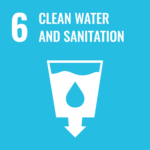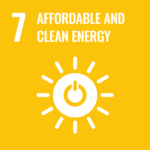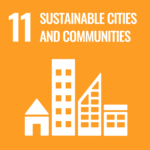Hiroshima University and Council of Scientific & Industrial Research
JOINT INTERNATIONAL WORKSHOP
広島大学-インド科学産業研究委員会(CSIR)との合同国際ワークショップ
29th September 2021
- 13:00~17:30(JST: 日本標準時)
- 9:30~14:00(IST: インド標準時)
ZOOM Online / オンライン開催(要参加申込み)
言語:英語
Program
MODERATOR
Dr. Akimasa Fujiwara
Vice President (Academy of Hiroshima University), Hiroshima University
13:00 (JST) /9:30 (IST) Opening Remarks
Dr. Mitsuo OCHI
President, Hiroshima University
Dr. Shekhar C MANDE
Director General, Council of Scientific & Industrial Research
13:15 (JST) /9:45 (IST) GREETING
Mr. Yasuhiro YONEHARA
First Secretary, Embassy of Japan in India
13:25 (JST) /9:55 (IST) INTRODUCTION of R&D Strategy
Dr. Manabu ABE
Executive Vice President (Research and Academia-Government-Community Collaboration), Hiroshima University
Dr. Anuradha MADHUKAR
Senior Principal Scientist, International S&T Affairs Directorate, CSIR
13:45 (JST) /10:15 (IST) PARALLEL SESSIONS



Outline
In our research group, we aimed to develop technology in (1) Smart Vision & Sensing, (2) Smart Mechanism & Design, and (3) Smart Control & Manipulation to promote research and education for an Industrial Revolution. The joint workshop 2021 is the follow up and discussion session on futuristic research activities. During the first joint workshop (2019) with CEERI, CMERI, NAL, and NEERI, they have proposed collaborative research on ‘Drone with manipulator’ to solve environmental sampling issues in India inspired from existing technologies in our laboratory. In the upcoming workshop, we will discuss on smart sensing and robotics technologies required for the proposed research as well as new emerging research possibilities in the microfluidics, and lab on chip.Program
- Smart Vision and Sensing (AI-based High-speed Tracking), Prof. Idaku Ishii
- Smart Robotics and Drone Manipulator, Prof. Takeshi Takaki
- Vibration Sensing and Imaging, Dr. Kohei Shimasaki
- Real-time intelligent Systems, Dr. Sanjay Singh
- Compliant and Soft Actuation for Physically Interactive Applications, Dr. Soumen Sen
- Application of Drones and Robotics in Environmental Monitoring, Dr. Nitin Labhsetwar
- Drone for Society, Dr. Satyanarayana Murthy
Discussion: Topics to be discussed
- Dexterous robotic multicopter using high-speed visual feedback control
- Water sampling for environmental assessment
- Applications for lab-on-chip and AI-based analysis

Outline
Reduction of CO2 emission and find out the alternative solutions for the energy demands are now considered as the global issues. Researchers put the efforts in different research fields to fulfill the present energy demands including electrochemical energy storage and supercapacitor applications, hydrogen energy, ammonia storage etc. The search for different high-performance materials is important for the applications. Current technology welcomes the various nanostructures, heterostructures, alloys for different energy applications. Prof. Takayuki Ichikawa has expertise in the field of hydrogen storage, chemical compressor and thermochemical generation, all solid-state Li ion batteries, ammonia applications. His group majorly contributes the implementation of metal hydrides in various hydrogen and electrochemical applications. Dr. Bipin Kumar Gupta devoted his time andefforts in of material synthesis, and they have fabricated many dimensionalities dependent system such as 2D materials for hydrogen storage to make air stable metal hydride as well as applications in many other energy storage applications such as battery, supercapacitor and ammonia detection, storage and production.Program
- Session Introduction and Brief about Quantum Materials Science and Engineering Laboratory, Prof. Takayuki Ichikawa (HU)
- Prospects of 2D materials in Hydrogen Technology and Other Energy Storage Systems, Dr. Bipin Kumar Gupta (CSIR NPL)
- Emerging two dimensional materials for energy storage and conversion, Dr. Rini Singh (HU)
- Implementation of combination of metal alloys for high performance hydrogen compressor, Dr. Keita Shinzato (HU)
- Two Dimensional Materials for Battery Applications, Dr. Ritu Srivastava (CSIR NPL)
- Supercapacitors: Perspective of 2D Materials, Dr. C. K. Suman (CSIR NPL)
- Different metal hydride combinations for Ammonia storage applications, Dr. Fangqin Guo (CSIR NPL)
- Ammonia Detection, Storage and Production with Advanced 2D materials, Dr. Shubhda Srivastava (CSIR NPL)



Background
When HU and CSIR signed the MoU in October, 2018, the representative applicant was visiting CSIR-NML in Jamshedpur in order to seek the possibilities on any collaborations with HU. He obtained an opportunity for presenting his recent research works there. In addition to the presentation, the brief introduction on HU was made. At that time, he also joined all the events prepared and actively discussed and exchanged the information for the collaborations with several researchers including the head of CSIR-NML. Since his visit, the two and half years are past in the pandemic. However, to express the possible collaborations into the actual form, several discussions with the researchers in NML has been made. As the result, collaborated online workshop is proposed, and they agreed with his proposition.Outline
The planed session provides two researchers from HU and CSIR-NML to discuss anything about the following contents about the structural materials with high functions.- Understand the interest and capabilities of the organizations in:
- New materials development for high functional structure including alloy design, material characterization, mechanical property evaluation, etc.
- Mathematical modelling including high strain rate material processes, formulating a joint action plan
- Sheet metal formability and mathematical modelling
- Identification of specific research areas of mutual interests
- Explore the possibility of a formal collaborative platform
Program
- Impact tests and finite element simulation of martensitically-transformed steel, Dr. Takeshi Iwamoto (HU)
- An overview of material development activities and research facilities at CSIR-NML, Dr. Vikas Srivastava (CSIR-NML)
- Floating structure for offshore wind turbine and its structural member, Dr. Yoshikazu Tanaka (HU)
- Alloy design and processing of some key structural materials, Dr. Gopi K. Mandal (CSIR-NML)
Undisclosed



Outline
One of the objectives of synthetic organic chemistry is contribution to biomedical and health sciences through the identification of novel synthetic scaffolds having therapeutic importance. CSIR CDRI and HU_SOC aims to contribute mainly from 3 research areas related to synthetic organic chemistry, i.e., medicinal chemistry, new reaction development, and synthesis of bioactive natural products. In this session, we will discuss recent progress in each research area from CSIR and HU. For the first part, the synthesis of natural product inspired molecules that showed tumor growth inhibition by inducing autophagy, and structural optimization of ligands for the development of therapeutic and diagnostic medicines will be discussed. In the second part, we focus development of effective method for the trifluoromethylation of heterocyclic compounds and the construction of various trifluoromethylated organic scaffolds. As a last part we will discuss synthetic study of bioactive natural products including “izine”-based alkaloids and anticancer aromatic polyketide antibiotics.Program
- Opening Remarks
- Amino Acids Derived Bioactives: Towards Anticancer agents and Autophagic Cell death?, Dr. Gautam Panda (CSIR CDRI)
- Optimization study of Prostate-Specific Membrane Antigen Ligands as PET imaging agents of prostate cancer, Dr Ryo NAKAJIMA (HU)
- Development of trifluoromethylation of heteroaromatics using Brønsted acid catalysts, Dr. Takahiro SHIRAI (HU)
- Trifluorodiazoethane: A Versatile Reagent for the Rapid Construction of Trifluoromethylated Building Blocks, Dr. Kishor Mohanan (CSIR CDRI)
- Acetal and hydroxylactam: new collaborators in asymmetric catalysis, Dr. Dipankar Koley (CSIR CDRI)
- Synthetic study towards anticancer aromatic polyketides antibiotics, Prof. Takuya KUMAMOTO (HU)
- Discussion / wrap-up
- Closing Remarks


Outline
The session discusses the ongoing research in the CSIR labs SERC, CBRI, CMERI and HU in the area of health monitoring of civil engineering infrastructure. Initially, a brief overview of all the institutions will be presented to introduce each institute and its major capabilities. There will be six technical presentations by members of various institutes on areas such as vibration-based health monitoring, ultrasonic methods acoustic methods, and water intentional spraying test. The presentation details are given in the program. There will be a discussion after the presentations where opportunities for collaborations are explored.Program
- Robust health monitoring of critical structures – baseline free approaches using vibration, acoustic and ultrasonic techniques, Dr. Saptarshi Sasmal (CSIR-SERC)
- Monitoring of Civil Structures using Ultrasonic and Thermal Waves, Dr. Debdutta Ghosh (CSIR-CBRI)
- Utilization of a simplified nondestructive test with water spraying for cover concrete quality inspectionm, Dr. Nguyen Huu May (HU)
- Structural Health Monitoring of Civil Structures: A Case Study, Dr. Ajay Chourasia (CSIR-CBRI)
- Vibration Based Health Monitoring Rotating Equipment and Civil Structures, Dr. S.K. Laha (CSIR-CMERI)
- Damage identification in bridge models using signal energy of vibration responses under traffic, Dr. Riya Catherine George (HU)
16:45 (JST) /13:15 (IST) Summary and Discussion
Mr. Yuji NISHIKAWA
Advisor for International Relations and Cooperation, Sakura Science Program Headquarters, Japan Science and Technology Agency (JST)
13:25 (JST) /13:55 (IST) CLOSING REMARKS
Dr. Manabu ABE
Executive Vice President (Research and Academia-Government-Community Collaboration), Hiroshima University
Contact
ILDP Office
- ildp-program[at]hiroshima-u.ac.jp
- +81-82-424-6954
- https://ildp.hiroshima-u.ac.jp






